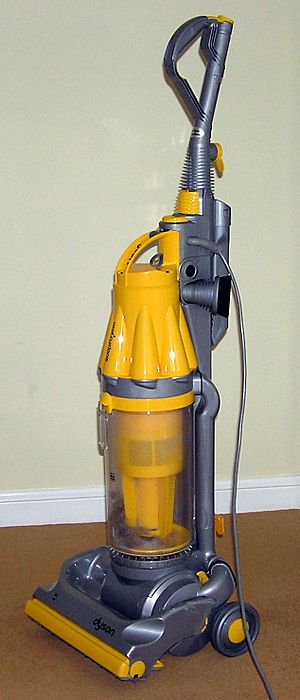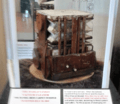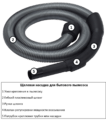Vacuum cleaner facts for kids
A vacuum cleaner is a cool machine that helps us clean our homes! It's also often called a vacuum. This device uses a special trick: it creates a strong suction, like a mini-tornado, to pull in dust and dirt from floors and other surfaces. All the dirt then goes into a container inside the vacuum, which you can empty into the garbage when it's full.
There are many different kinds of vacuum cleaners, each designed for specific cleaning jobs:
- Upright vacuum cleaners
- Canister vacuum cleaners
- Robot vacuum cleaners
- Handheld vacuum cleaners
- Car vacuum cleaners
- Carpet cleaners
Contents
What is a Vacuum Cleaner?
A vacuum cleaner is an electrical appliance that cleans floors, carpets, and other surfaces by sucking up dirt and debris. It works by creating a low-pressure area, or a partial vacuum, inside the machine. The higher air pressure outside then pushes air, along with dirt and dust, into the vacuum cleaner's collection bag or container.
How Do Vacuum Cleaners Work?
Most vacuum cleaners use an electric motor that spins a fan. This fan pushes air out of the vacuum cleaner, which creates a lower air pressure inside. Because air always moves from areas of high pressure to areas of low pressure, the air outside the vacuum cleaner rushes in, carrying dust and dirt with it. This dirty air then passes through a filter, which traps the dust and lets the clean air flow out. The collected dirt stays in a bag or a special container that can be emptied later.
Types of Vacuum Cleaners
Vacuum cleaners come in many shapes and sizes, each with its own benefits:
- Upright Vacuum Cleaners: These are tall, stand-up models often used for carpets. They have a cleaning head at the bottom and a handle for pushing.
- Canister Vacuum Cleaners: These have a separate canister (the main body with the motor and dustbin) that you pull behind you, connected to a long hose and cleaning wand. They are great for hard floors, stairs, and reaching tight spots.
- Robot Vacuum Cleaners: These are small, round, and can clean floors on their own! They use sensors to navigate around furniture and obstacles.
- Handheld Vacuum Cleaners: These are small, portable, and battery-powered. They are perfect for quick clean-ups, spills, or cleaning inside cars.
- Wet/Dry Vacuum Cleaners: Also known as shop vacs, these powerful vacuums can pick up both dry dirt and liquids. They are often used in garages or workshops.
- Central Vacuum Systems: In some homes, a large vacuum unit is installed in a basement or garage. Hoses are plugged into wall inlets throughout the house, making cleaning very convenient.
History of Vacuum Cleaners
People have always looked for better ways to clean. Before vacuum cleaners, people used brooms and carpet beaters to remove dirt.
- Early Carpet Sweepers: One of the first steps towards modern vacuuming was the carpet sweeper. In 1860, Daniel Hess invented a carpet sweeper that had rotating brushes and a bellows to create suction.
- First Motorized Cleaners: The first motorized vacuum cleaner was invented in 1901 by Hubert Cecil Booth in England. His "Puffing Billy" was a large, horse-drawn machine that was parked outside a building, and long hoses were run inside through windows to clean.
- Portable Electric Vacuums: In 1907, James Murray Spangler, a janitor, invented a portable electric vacuum cleaner. He later sold his patent to William Henry Hoover, who started the famous Hoover Company. This made vacuum cleaners much more common in homes.
- Modern Innovations: Over the years, vacuum cleaners have become more powerful, lighter, and quieter. New technologies like cyclonic separation (used by companies like Dyson) remove dust without needing bags, and robotic vacuums continue to make cleaning easier.
Images for kids
-
A Dyson DC07 upright cyclonic vacuum cleaner using centrifugal force to separate dust and particles from the air flowing through the cylindrical collection vessel
See also
 In Spanish: Aspiradora para niños
In Spanish: Aspiradora para niños




















